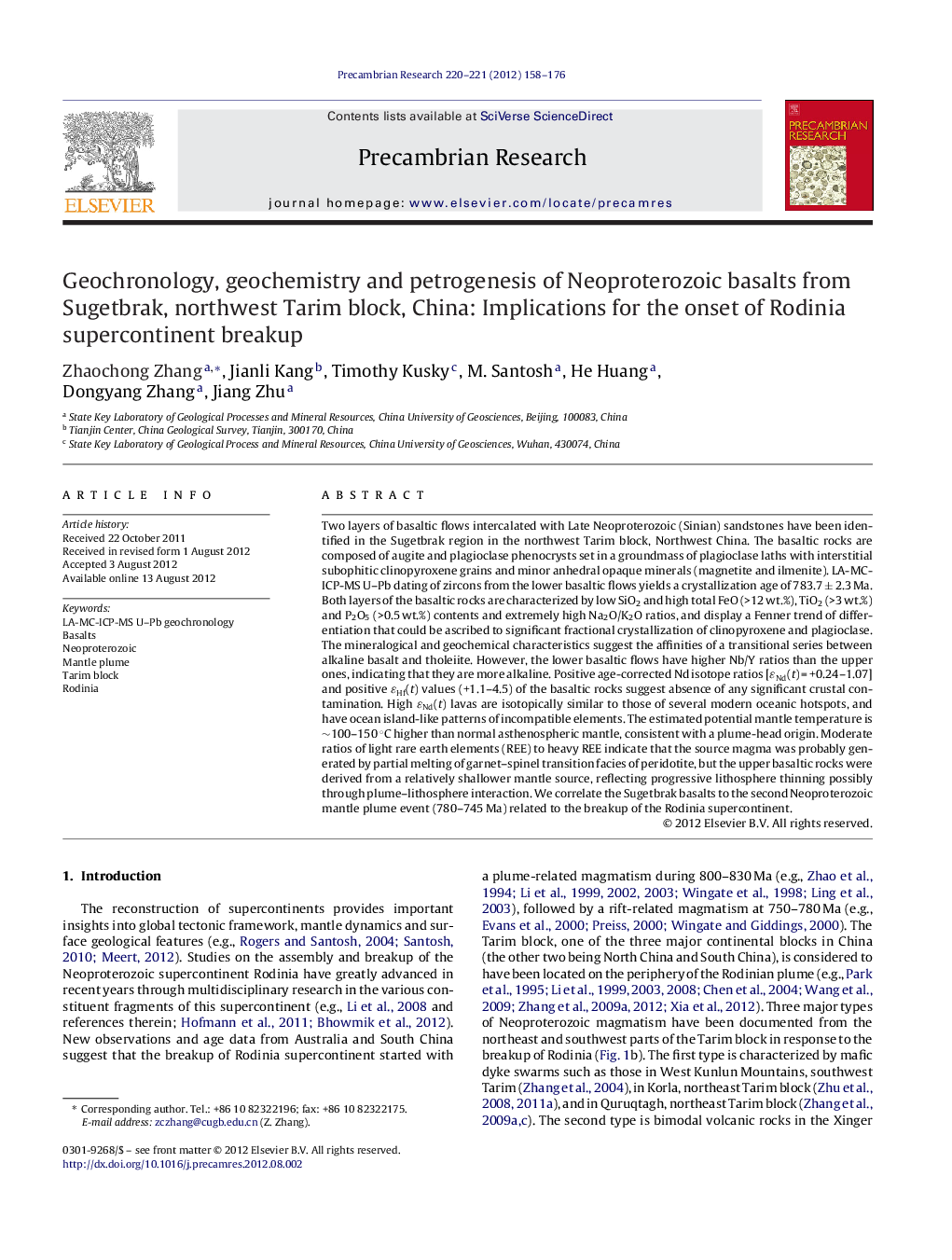| کد مقاله | کد نشریه | سال انتشار | مقاله انگلیسی | نسخه تمام متن |
|---|---|---|---|---|
| 4723479 | 1639652 | 2012 | 19 صفحه PDF | دانلود رایگان |

Two layers of basaltic flows intercalated with Late Neoproterozoic (Sinian) sandstones have been identified in the Sugetbrak region in the northwest Tarim block, Northwest China. The basaltic rocks are composed of augite and plagioclase phenocrysts set in a groundmass of plagioclase laths with interstitial subophitic clinopyroxene grains and minor anhedral opaque minerals (magnetite and ilmenite). LA-MC-ICP-MS U–Pb dating of zircons from the lower basaltic flows yields a crystallization age of 783.7 ± 2.3 Ma. Both layers of the basaltic rocks are characterized by low SiO2 and high total FeO (>12 wt.%), TiO2 (>3 wt.%) and P2O5 (>0.5 wt.%) contents and extremely high Na2O/K2O ratios, and display a Fenner trend of differentiation that could be ascribed to significant fractional crystallization of clinopyroxene and plagioclase. The mineralogical and geochemical characteristics suggest the affinities of a transitional series between alkaline basalt and tholeiite. However, the lower basaltic flows have higher Nb/Y ratios than the upper ones, indicating that they are more alkaline. Positive age-corrected Nd isotope ratios [ɛNd(t) = +0.24–1.07] and positive ɛHf(t) values (+1.1–4.5) of the basaltic rocks suggest absence of any significant crustal contamination. High ɛNd(t) lavas are isotopically similar to those of several modern oceanic hotspots, and have ocean island-like patterns of incompatible elements. The estimated potential mantle temperature is ∼100–150 °C higher than normal asthenospheric mantle, consistent with a plume-head origin. Moderate ratios of light rare earth elements (REE) to heavy REE indicate that the source magma was probably generated by partial melting of garnet–spinel transition facies of peridotite, but the upper basaltic rocks were derived from a relatively shallower mantle source, reflecting progressive lithosphere thinning possibly through plume–lithosphere interaction. We correlate the Sugetbrak basalts to the second Neoproterozoic mantle plume event (780–745 Ma) related to the breakup of the Rodinia supercontinent.
► The Sugetbrak basalts erupted at 783.7 ± 2.3 Ma.
► They show geochemical affinity to transitional series between alkaline basalt and tholeiite.
► They have typical OIB-type geochemical character, and possible plume-head origin.
► They were probably generated by partial melting of garnet–spinel transitional mantle.
► They are possibly related to the second mantle plume event associated with Rodinia breakup.
Journal: Precambrian Research - Volumes 220–221, November 2012, Pages 158–176